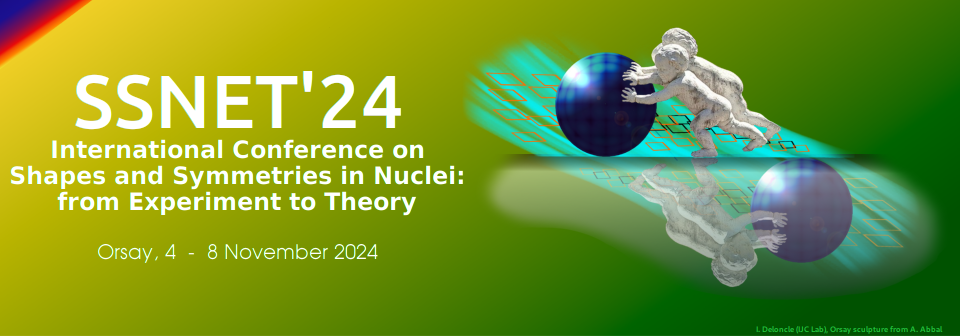Orateur
Description
A recent survey extracted the implied effective $E2$ charges from $B(E2;2_1^+ \rightarrow 0_1^+)$ values in doubly magic nuclides plus or minus two like nucleons [1]. A similar survey of the effective $g$ factors in the $M1$ operator as determined empirically from the magnetic moments of nuclei adjacent to closed shells will be presented. The patterns will be discussed and compared with previous work.
Selected cases where the data indicate unexpected effective $g$ factors and/or effective charges will be considered. Such cases indicate additional configuration mixing beyond that implicit in the effective operator. A stand-out case is $^{210}$Po where the experimental $2_1^+ \rightarrow 0_1^+$ transition strength is much smaller than expected [2]. Such behavior is unusual; configuration mixing usually increases $E2$ collectivity and hence $B(E2)$ values.
The octupole vibration of the $^{208}$Pb core is known to mix the single-particle states in trans-Pb nuclei and has a profound influence on the $g$ factors and $E3$ decays of the high-spin isomers [3]. An analysis of the effect of octupole coupling on the $g$ factors of the 8$^+$ isomers in the $N=126$ isotones and their $E2$ decays, was given some years ago [4]. The possible effect of octupole mixing on the $E2$ decays in $^{210}$Po will be revisited [4]. Such mixing was not included in the evaluation of the $E2$ effective charge in [1].
The feasibility of a $g$-factor measurement by the transient-field method on a $^{210}$Po beam, to assess whether neutron components are present in its $2_1^+$ state, will be evaluated.
[1] A.E. Stuchbery and J.L. Wood, Physics 4, 697 (2022).
[2] D. Kocheva et al., Eur. Phys. J. A 53, 175 (2017).
[3] S.J. Poletti et al., Nucl. Phys. A 448, 189 (1986).
[4] A.E. Stuchbery et al., Nucl. Phys. A 555, 355 (1993).

